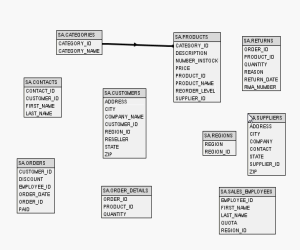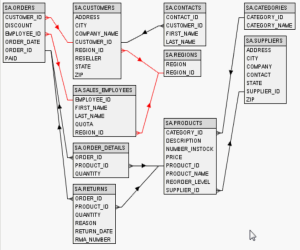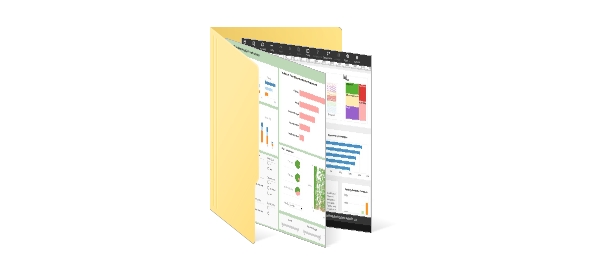Data Modeling Tutorials
Additional Resources on Data Modeling
-
Understanding the Six Phases of Data Analytics
This article outlines the six critical phases in the data analytics process: data collection, data cleaning, data exploration, data modeling, data interpretation, and data visualization. It emphasizes the importance of each phase in transforming raw data into actionable insights. The guide provides practical tips for effectively navigating each stage to ensure comprehensive analysis. Additionally, it discusses common challenges and best practices to overcome them.
-
Exploring the Three Pillars of Data Analytics
Delving into the core principles of data analytics, this article highlights speed, agility, and performance as the foundational pillars. It explains how these elements contribute to the efficiency and effectiveness of data analysis processes. The piece also covers how organizations can leverage these pillars to enhance decision-making and operational outcomes. Real-world examples illustrate the application of these principles in various industries.
-
The 5 V's of Data Analytics: An Overview
This article introduces the five key dimensions of data analytics: Volume, Velocity, Variety, Veracity, and Value. It discusses how each dimension impacts the way data is processed and analyzed. The guide provides insights into managing these aspects to derive meaningful conclusions from complex datasets. It also offers strategies for organizations to address challenges associated with each dimension.
-
Understanding Governed Data Integration
Focusing on the complexities of combining data from various sources, this article explains the concept of governed data integration. It highlights the importance of ensuring data accuracy, consistency, and security during the integration process. The piece provides best practices for implementing governed integration strategies. Case studies demonstrate the benefits of adopting such approaches in organizational data management.
-
Defining Data Governance Dashboards
This article explores the role of data governance dashboards in monitoring and managing an organization's data assets. It outlines the key components and functionalities of these dashboards. The guide discusses how they help in maintaining data quality and compliance. Examples illustrate how organizations utilize these dashboards to enforce data governance policies effectively.
-
Differentiating Between Visualization and Dashboard
Clarifying common misconceptions, this article distinguishes between data visualizations and dashboards. It explains the unique purposes and applications of each in data analysis. The guide provides examples to illustrate when to use visualizations versus dashboards. It also discusses how combining both can enhance data interpretation and decision-making.
-
Open Source Analytics Tools for Data-Driven Decisions
Highlighting the rise of open-source analytics tools, this article discusses their role in enabling businesses to make data-driven decisions without significant financial investment. It reviews several popular open-source tools and their features. The guide provides tips on selecting the right tool based on organizational needs. It also addresses potential challenges and considerations when adopting open-source solutions.
-
Exploring Different Ways to Analyze Data
This article provides an overview of various data analysis methods, including descriptive, diagnostic, predictive, and prescriptive analytics. It explains the purpose and application of each method in deriving insights from data. The guide offers practical examples to illustrate how these methods can be implemented. It also discusses the benefits and limitations of each approach.
-
Evaluating the Pros and Cons of ETL
Focusing on the ETL (Extract, Transform, Load) process, this article examines its advantages and disadvantages in data integration. It discusses how ETL facilitates data consolidation and preparation for analysis. The guide also addresses challenges such as data latency and complexity. It provides recommendations for organizations considering ETL for their data integration needs.
-
Harnessing Big Data Analytics
This article delves into the concept of big data analytics and its significance in extracting insights from large and complex datasets. It discusses the tools and technologies used in big data analytics. The guide provides examples of how organizations leverage big data for strategic decision-making. It also covers the challenges associated with big data analytics and strategies to overcome them.
-
Understanding ETL in Data Integration
Providing a comprehensive overview, this article explains the ETL process and its role in data integration. It discusses the steps involved in extracting, transforming, and loading data. The guide highlights the benefits of ETL in ensuring data consistency and quality. It also addresses common challenges and best practices for implementing ETL effectively.
-
Analyzing the Advantages and Disadvantages of ETL
Building upon previous discussions, this article offers an in-depth analysis of the pros and cons of the ETL process. It examines how ETL supports data centralization and reporting. The guide also considers the limitations of ETL, such as scalability issues and data latency. It provides insights into when ETL is the appropriate choice for data integration.
-
Implementing ETL for Data Integration
Focusing on practical implementation, this article provides guidance on setting up and managing ETL processes. It covers the selection of ETL tools and platforms. The guide discusses best practices for optimizing ETL workflows. It also addresses common pitfalls and how to avoid them during ETL implementation.
-
Optimizing ETL Processes for Efficiency
This article offers strategies for enhancing the efficiency of ETL processes. It discusses techniques for improving data extraction, transformation, and loading speeds. The guide provides tips on automating ETL tasks to reduce manual intervention. It also covers monitoring and troubleshooting methods to ensure smooth ETL operations.




